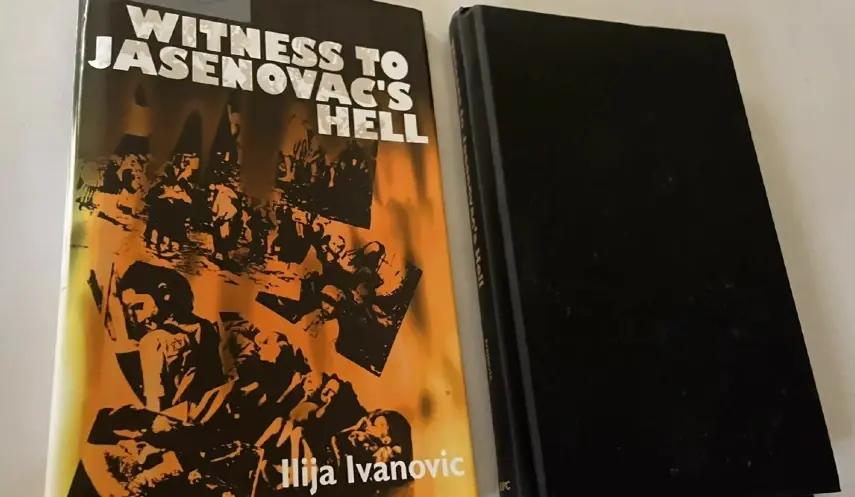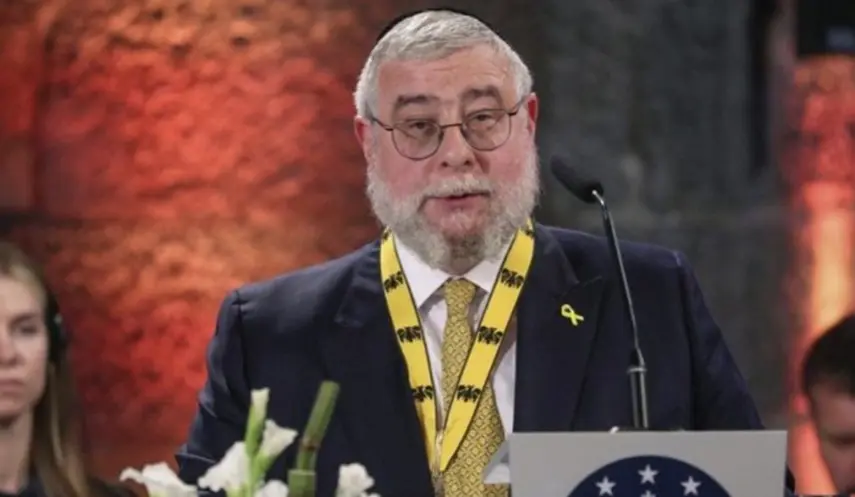WITNESS TO THE JASENOVAC HELL, ILIJA IVANOVIĆ, WAS TORMENTED BY ONE THING: WHY THE INSTITUTIONS OF EUROPE DID NOT CALL THE CRIME AGAINST SERBS IN THE NDH BY ITS TRUE NAME - GENOCIDE!?
Region - NDH - crimes /4/
04/25/2025
10:00

BANJA LUKA, APRIL 24 /SRNA/ - The last surviving participant in the Jasenovac camp breakout, Ilija Ivanović from Gornji Podgradci near Gradiška, who passed away on September 17, 2019 at the age of 90, described part of the atrocities in the Jasenovac camp and his participation in the breakout of the camp inmates in his memoirs "Witness to the Jasenovac Hell," which remain as a permanent witness to the monstrosity of the Ustashas against innocent people, Serbs, Jews and Roma.
Ilija often spoke about his time spent in the Jasenovac concentration camp and gladly responded to invitations to share his memories. He repeatedly gave several hours of interviews to institutions and museums that were engaged in researching the Ustasha crime of genocide during World War II.
He also wrote a memoir entitled "Witness to the Hell of Jasenovac," which has been translated into English. Dejan Motl wrote in In Memoriam that in the last years of his life he was tormented by the fact that the crime committed against Serbs in the Independent State of Croatia /NDH/ was not characterized by official European institutions as an Ustasha crime of genocide, because he alone lost 27 family members.
Ilija Ivanović was born on August 1, 1928, in the village of Gornji Podgradci near Gradiška. He grew up in a family where his father Mile and mother Jovanka raised their seven children. Although they were illiterate, they wanted their children to receive an education, so by the war, the four little Ivanovićs had completed four grades of elementary school, Motl wrote.
In the autumn of 1941, father Mile joined the Partisans, and his daughters Marija, Mara and Zorka followed him. During the Ustasha-Home Guard-German offensive on Kozar in the summer of 1942, the entire Ivanović family, except for Marija who managed to break through the encirclement, was deported, along with the rest of the Serbian population of the area, to the Stara Gradiška camp, and then to the camp economy of the Jasenovac camp system in the village of Jablanac.
Ilija's father Mile was killed in Jasenovac. His sister Zorka escaped from the camp with her cousin Jefto Ivanović, while his mother Jovanka, along with brother and two sisters, was transferred to the village of Velika Londžica in the Našice region, from where they returned home during the war.
Ilija's postcard, which he sent to his mother Jovanka on St. George's Day in 1944 as a 16-year-old, in which he informs her that he is healthy and asks if she can send him a package, was saved from oblivion.
On the eve of the breakout from the Jasenovac concentration camp, Motl stated, Ilija, hungry, was walking around the building of the tailoring and shoemaking workshop. He saw a group of people and, thinking that food was being distributed, approached them. In that group was Ante Bakotić, who told him that when the others left, he should follow them. He moved away, although it was not entirely clear to him what Bakotić meant.
When he heard a fuss a little later, he ran to see what was happening. He saw the door opening and people running outside. Ilija ran too. He decided to try to reach the forest, which was a kilometer away.
There he joined a group of about fifteen inmates. They continued running and came across the Ustasha bunkers. There the group split up, and Ilija ran in the direction of the Strug River, which he then crossed. While thinking about how to get home, he came across a Home Guard who told him that he had just passed through a minefield. The Home Guard took him to the Ustasha bunker.
Ilija, lying about his name and surname, told the Ustashas that he was fleeing from the Partisans. Since he was too weak for military service, the Ustashas handed him over to the peasant Pavle Babić in the village of Gornji Rajići, where he awaited the arrival of the Partisans. Shortly after the liberation, on April 26, 1945, he returned home.
At the age of 14, he was taken to Jasenovac from his native Gornji Podgradci, in columns that included numerous civilians from the Potkozarje region, including children, women, and the elderly.
He graduated from elementary school, then from the Teachers' College in Banja Luka in 1950, and a little later from the Faculty of Political Sciences in Belgrade. He worked as a teacher at a high school in Zenica, which he left at the beginning of the civil war in 1992.
After fleeing Zenica, in front of the Muslim army, Ilija spent the last years of his life in Gradiška and his native Gornji Podgradci.
The breakout of the Jasenovac camp prisoners took place on April 22, 1945. At that time, about 600 men from the Ciglana camp attempted a breakout, and about a hundred of them survived. The breakout of the prisoners from Kožara began on the same day. Of the 167, only 11 survived.
The Jasenovac concentration camp system represents the largest execution site in World War II on the territory of the former Yugoslavia.
The International Truth Commission on the Jasenovac System of Croatian Concentration Camps concluded that Croats killed more than 700,000 Serbs, 80,000 Roma and 23,000 Jews in Jasenovac and Donja Gradina.
Among the victims during the 1,337 days of the Jasenovac camp's existence were more than 20,000 children.

GOLDSCHMIDT: STILL WAITING FOR APOLOGY FROM BiH AUTHORITIES

POSSIBLE COOPERATION BETWEEN ALMAZOV RESEARCH CENTRE AND UNIVERSITY CLINICAL CENTRE

SARAJEVO "TROIKA" WANTS TO WEAKEN SNSD - THE BIGGEST OBSTACLE TO UNITARY BiH



